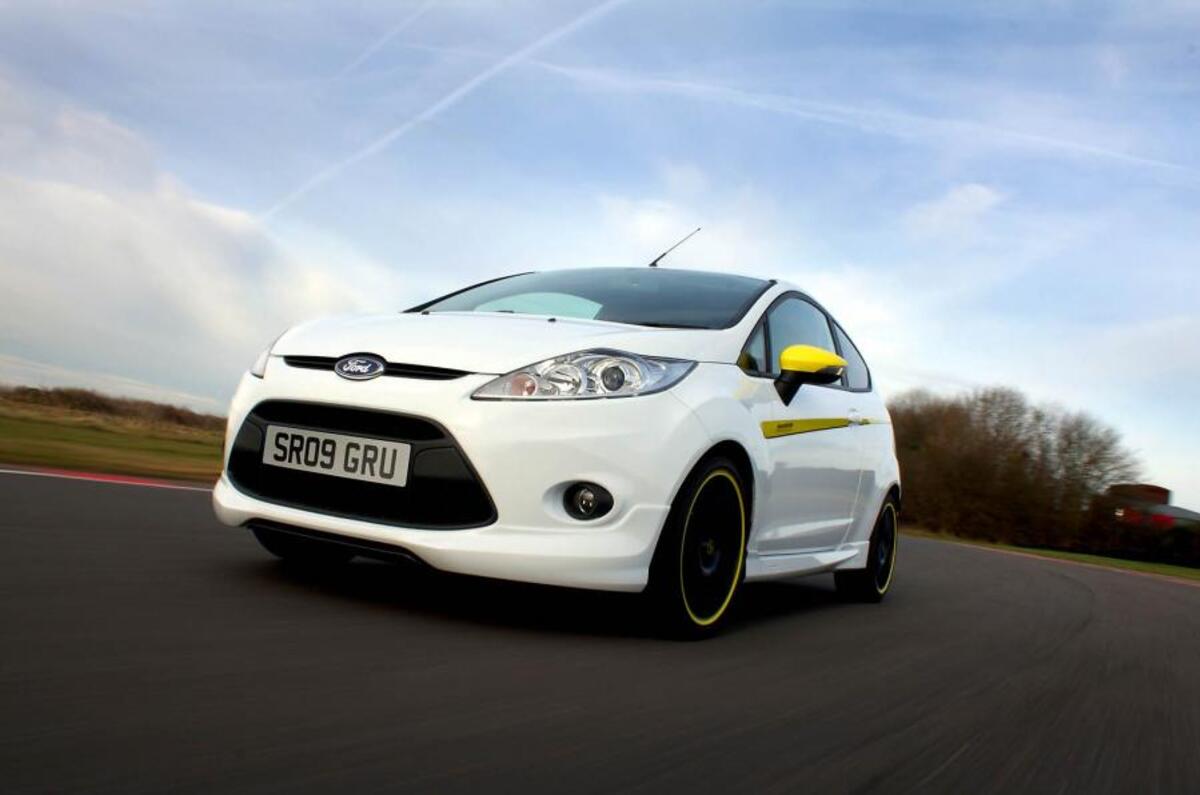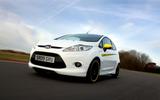This is the Ford Fiesta Mountune 140, the hottest version of Ford's brilliant supermini until the Ecoboost-engined ST arrived in showrooms.
Having offered engine tune-ups on the last Fiesta ST and the current Focus ST, Mountune Performance now has a powertrain upgrade for 1.6-litre Fiesta Zetec S and 1.6-litre Titanium petrol models.
The upgrade consists of a new induction system, a new exhaust, and some new software settings for the ECU of the Blue Oval’s Ti-VCT Sigma engine. After those changes that engine develops 138bhp at 6750rpm and 125lb ft of torque at 4250rpm (up from 118bhp at 6000rpm and 112lb ft at 4050rpm). And the extra poke means this Fiesta can dash to 60mph in just 7.9sec, down from around 10sec on a standard Zetec S.
A standard Ford Fiesta Zetec S can be extremely entertaining to throw around, truth be told. It’s a car with excellent steering, fantastic ergonomics, a snappy gearchange and a lively, responsive and incredibly deft chassis capable of rewarding and cosseting the driver in equal measure.
What Mountune adds is a dose of extra fizz in the farther reaches of the Fiesta’s rev range. Below 4000rpm, the Mountune Fiesta performs almost exactly as a normal 1.6 does. There’s a louder, deeper and more characterful hum from the exhaust, but that’s all.
Keep your right foot pinned to the carpet beyond 4000rpm though and something altogether more remarkable happens. The rev needle’s clockwise progress towards 7000rpm quickens considerably.
There’s an audible change in the blare coming from those chromed tailpipes, and a more industrious chatter from the engine’s intake and exhaust valves, as the engine’s camshafts change gear. And there’s a new-found willingness to charge forwards from the car’s front wheels.
The first time you wring this little car right out to its 7000rpm redline, in fact, you’ll wonder if you didn’t pick up the keys to a VTEC Honda by mistake. You’ll be reminded that you didn’t, however, when you attack a choppy, broken B-road and find large reserves of composure in the Fiesta’s chassis.
The car’s steering wheel is ideally weighted, perfectly placed and perfectly paced too, and its handling balance is perfectly neutral. It feels as agile, although clearly not as quick, as almost any 200bhp ‘proper’ hot hatch we could compare it with.
You can have the Mountune engine upgrade fitted to any Mk7 1.6-litre petrol Fiesta, at one of any number of accredited Ford dealerships nationwide, for just £1299. It doesn’t affect the car’s CO2 rating. It doesn’t affect Ford’s manufacturer warranty. And if you opt for certain insurance providers, it doesn’t even affect the price of your premium.
It will, however, affect your economy – mainly because it is so tempting to exploit the modifications. Refinement is poorer too, largely thanks to the exhaust.
Mountune sells a set of lightweight alloy wheels and an exterior styling pack to go with the engine upgrade, but we’d leave those to one side and revel in the value for money of the extra poke package. Because opting for leather seats, a leather gearknob, metallic paint and Bluetooth on your new Fiesta would cost you more than this engine tune-up would.



























Add your comment